Sarah L. Johnson's Blog, page 65
December 26, 2017
Spotlight on a recent trend in English historical fiction: the 17th century
The English Civil War, the Restoration, the Great Fire of London, the Great Plague, and the country's notorious witch persecutions... 17th-century England is full of dramatic events ripe for historical novel treatment. The period has long been a favorite of mine, and it's great to see trends finally catching up with my reading tastes. This flourishing new direction in historical fiction has taken root in the UK marketplace; nearly all of the books below are from British authors, and/or are published by British publishers. However, 17th-century fiction fans from around the world can easily join in!
Below are 14 new and forthcoming novels set in this period, with covers and short blurbs. Are there any you've read, or are hoping to read? Suggestions for others are welcome.
If you're reading this post via Goodreads, and the images don't match up with the text, you can find a better version at my blog via this link.
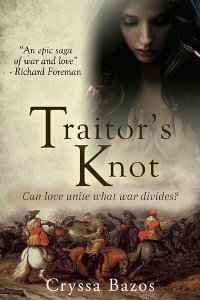
1650: This romantic epic about a former Royalist captain and a traitor's daughter takes place following the Second English Civil War and the execution of Charles I, a time of suspicions and divided loyalties. Endeavour, May 2017. [see on Goodreads]
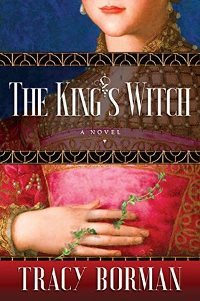
1603: This first in a trilogy by a British historian (Elizabeth's Women and others) will focus on a young woman with healing talents who gets drawn into danger at the Jacobean court. Atlantic Monthly, July 2018. [see on Goodreads]
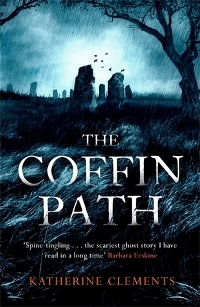
1674: This gothic ghost story, set in wild, remote Yorkshire amid the ruins of the English Civil War, centers on a young woman, a creepy old hall, and a stranger who pays a call. Headline, Feb 2018. [see on Goodreads]
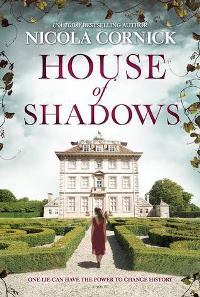
1662, the early 19th century, and the present day: a time-slip focusing on Elizabeth Stuart, the "Winter Queen," and her champion, William Craven; and a modern woman seeking her missing brother. Graydon House, Oct 2017; I interviewed the author based on the UK edition (2015). [see on Goodreads]
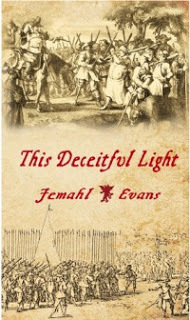
1640s: This second novel in the Blandford Candy series sees him looking back on his picaresque adventures during the Civil War years, which include conspiracy, a treasure hunt, and the quest for a missing book. Holland House, Sept. 2017. [see on Goodreads]
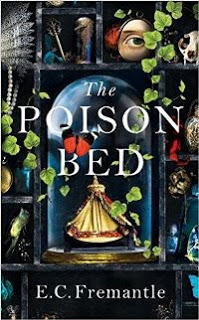
1615: Writing under a new name for her historical thrillers, Elizabeth Fremantle (who's written several excellent novels of Tudor- and Stuart-era royals including The Girl in the Glass Tower ) turns her hand to the real-life drama of the Overbury murder scandal. Michael Joseph, June 2018. [see on Goodreads]
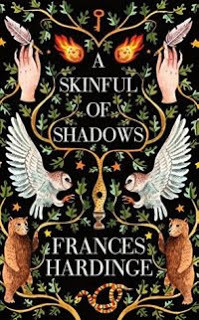
1640s: This dark historical fantasy, geared towards YAs and set during the early English Civil War, follows a girl named Makepeace who discovers her family's innate talent for hosting spirits of the dead. Amulet, Oct. 2017; Macmillan UK, Sept 2017 (the UK cover is above). [see on Goodreads]
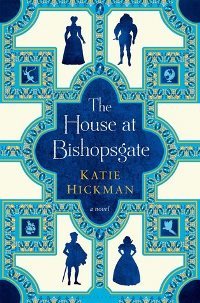
1611: After numerous trials detailed in the first two books (The Aviary Gate and The Pindar Diamond), merchant Paul Pindar and his wife Celia, a former captive of the Sultan, take up residence in London, but troubles soon invade their household. Bloomsbury, May 2017. [see on Goodreads]
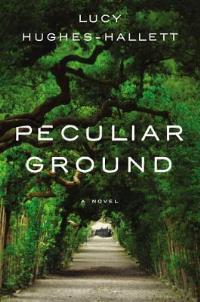
1663 and the 20th century: the isolated estate of Wychwood in Oxfordshire reflects the themes of the surrounding world, from the years after the English Civil War through the Cold War. This sounds like a great choice for fans of "house" books. Harper, Jan 2018. [see on Goodreads]
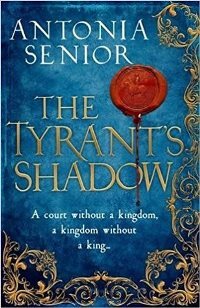
1652: A varied cast of characters, including a grieving husband, an overzealous preacher, and his suffering wife, ponder their political ties and religious loyalties during the age of Oliver Cromwell. Corvus, Apr. 2017. [see on Goodreads]
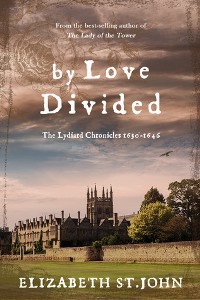
1630: Book 2 of the author's Lydiard Chronicles (after The Lady of the Tower ) follows the second generation of Apsleys, the children of Lucy St.John, as England heads toward civil war. I'll be reviewing this novel shortly! Falcon Historical, Oct. 2017. [see on Goodreads]
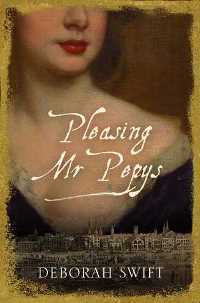
1660s: The life of Samuel Pepys, the famous diarist of mid-17th century London, is envisioned through different perspectives, including that of Deb Willet, his wife's real-life maid, who finds herself at the center of intrigue. Accent, Sep. 2017. [see on Goodreads]
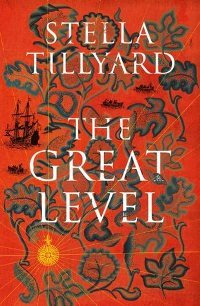
1649: The author of Aristocrats, among many other works of historical nonfiction and fiction, pens a new historical novel about a Dutch engineer, the English fens, and the impact of scientific achievement. July 2018, Chatto & Windus. [see on Goodreads]
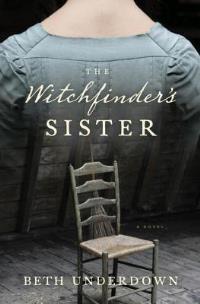
1645: The story of Matthew Hopkins, England's notorious Witchfinder General, is seen through the eyes of an older sister, Alice, who's frightened of what he has become. Ballantine, April 2017; Viking UK, March 2017. [see on Goodreads]
Also see The Bookseller's announcement for the sale of Stacey Bartlett's forthcoming The Familiars, set during the Pendle witch trials of 1612.
While I was gathering up material for this post last month (sometimes these ideas take a while to percolate), I came across Elizabeth Fremantle's post on the History Girls blog, "The Stuarts Are Still the New Tudors," which also focuses on this very welcome trend. Check out her post for more perspective, and for info on additional titles that fit, both in fiction and nonfiction.
Below are 14 new and forthcoming novels set in this period, with covers and short blurbs. Are there any you've read, or are hoping to read? Suggestions for others are welcome.
If you're reading this post via Goodreads, and the images don't match up with the text, you can find a better version at my blog via this link.

1650: This romantic epic about a former Royalist captain and a traitor's daughter takes place following the Second English Civil War and the execution of Charles I, a time of suspicions and divided loyalties. Endeavour, May 2017. [see on Goodreads]

1603: This first in a trilogy by a British historian (Elizabeth's Women and others) will focus on a young woman with healing talents who gets drawn into danger at the Jacobean court. Atlantic Monthly, July 2018. [see on Goodreads]

1674: This gothic ghost story, set in wild, remote Yorkshire amid the ruins of the English Civil War, centers on a young woman, a creepy old hall, and a stranger who pays a call. Headline, Feb 2018. [see on Goodreads]

1662, the early 19th century, and the present day: a time-slip focusing on Elizabeth Stuart, the "Winter Queen," and her champion, William Craven; and a modern woman seeking her missing brother. Graydon House, Oct 2017; I interviewed the author based on the UK edition (2015). [see on Goodreads]

1640s: This second novel in the Blandford Candy series sees him looking back on his picaresque adventures during the Civil War years, which include conspiracy, a treasure hunt, and the quest for a missing book. Holland House, Sept. 2017. [see on Goodreads]

1615: Writing under a new name for her historical thrillers, Elizabeth Fremantle (who's written several excellent novels of Tudor- and Stuart-era royals including The Girl in the Glass Tower ) turns her hand to the real-life drama of the Overbury murder scandal. Michael Joseph, June 2018. [see on Goodreads]

1640s: This dark historical fantasy, geared towards YAs and set during the early English Civil War, follows a girl named Makepeace who discovers her family's innate talent for hosting spirits of the dead. Amulet, Oct. 2017; Macmillan UK, Sept 2017 (the UK cover is above). [see on Goodreads]

1611: After numerous trials detailed in the first two books (The Aviary Gate and The Pindar Diamond), merchant Paul Pindar and his wife Celia, a former captive of the Sultan, take up residence in London, but troubles soon invade their household. Bloomsbury, May 2017. [see on Goodreads]

1663 and the 20th century: the isolated estate of Wychwood in Oxfordshire reflects the themes of the surrounding world, from the years after the English Civil War through the Cold War. This sounds like a great choice for fans of "house" books. Harper, Jan 2018. [see on Goodreads]

1652: A varied cast of characters, including a grieving husband, an overzealous preacher, and his suffering wife, ponder their political ties and religious loyalties during the age of Oliver Cromwell. Corvus, Apr. 2017. [see on Goodreads]

1630: Book 2 of the author's Lydiard Chronicles (after The Lady of the Tower ) follows the second generation of Apsleys, the children of Lucy St.John, as England heads toward civil war. I'll be reviewing this novel shortly! Falcon Historical, Oct. 2017. [see on Goodreads]

1660s: The life of Samuel Pepys, the famous diarist of mid-17th century London, is envisioned through different perspectives, including that of Deb Willet, his wife's real-life maid, who finds herself at the center of intrigue. Accent, Sep. 2017. [see on Goodreads]

1649: The author of Aristocrats, among many other works of historical nonfiction and fiction, pens a new historical novel about a Dutch engineer, the English fens, and the impact of scientific achievement. July 2018, Chatto & Windus. [see on Goodreads]

1645: The story of Matthew Hopkins, England's notorious Witchfinder General, is seen through the eyes of an older sister, Alice, who's frightened of what he has become. Ballantine, April 2017; Viking UK, March 2017. [see on Goodreads]
Also see The Bookseller's announcement for the sale of Stacey Bartlett's forthcoming The Familiars, set during the Pendle witch trials of 1612.
While I was gathering up material for this post last month (sometimes these ideas take a while to percolate), I came across Elizabeth Fremantle's post on the History Girls blog, "The Stuarts Are Still the New Tudors," which also focuses on this very welcome trend. Check out her post for more perspective, and for info on additional titles that fit, both in fiction and nonfiction.
Published on December 26, 2017 07:00
December 21, 2017
Whispers of Warning by Jessica Estevao, a spiritualist mystery set in turn-of-the-century Maine
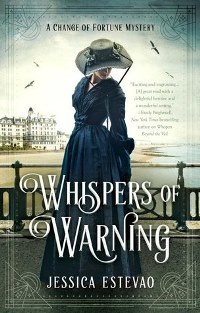 It’s the turn of the 20th century, and the resort town of Old Orchard Beach, Maine, expects a busy season. Large crowds gather for a suffrage rally, plus everyone awaits the opening of a lengthy pier designed to entice tourists.
It’s the turn of the 20th century, and the resort town of Old Orchard Beach, Maine, expects a busy season. Large crowds gather for a suffrage rally, plus everyone awaits the opening of a lengthy pier designed to entice tourists.This second novel in the A Change of Fortune series finds former con artist Ruby Proulx enjoying her new life in town at her Aunt Honoria’s spiritualist-themed Hotel Belden and learning to heed her clairaudient abilities. The arrival of nationally-known psychic and suffragist Sophronia Foster Eldridge draws new business to the hotel while alarming townspeople. After the lady makes a public announcement at the rally, promising to expose corruption among those in power, it’s a sure sign that trouble’s ahead.
This is a mystery, so fans of the genre can infer that Sophronia’s days are numbered. However, the plot is rather dilatory in getting there. There are a host of unconventional characters staying at the Belden, including opinionated cook/housekeeper Mrs. Doyle, who can detect people’s auras; the obnoxious brother and sister-in-law of Honoria’s devoted suitor; and an author belonging to an elite group of hay fever sufferers (this society, fascinatingly enough, is based on historical fact). Also visiting town is an anti-suffrage politician who was once engaged to Sophronia.
Reading about these backstories is interesting, but suspense is lacking early on. Once Sophronia’s body is discovered in a saltwater pool, the pacing improves. Discouraged by the dishonest police chief’s lack of interest in the case, Officer Warren Yancey reluctantly teams up with Ruby, who he admires, although he thinks her psychic work is a bunch of hokum. Their growing friendship is spiced with romantic tension. The social concerns of the period are well evoked. Not surprisingly, Ruby encounters a few men with sexist attitudes, which were just as irritating then as they are today.
Whispers of Warning was published by Berkley in September; I reviewed it for November's Historical Novels Review. For those who like to read series in order, here's the review of book 1, Whispers Beyond the Veil . Both books have great covers designs!
Published on December 21, 2017 06:34
December 15, 2017
Mr. Dickens and His Carol, a Victorian holiday tale by debut novelist Samantha Silva
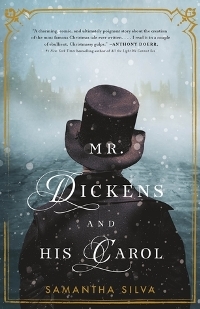 It’s November 1843, and Charles Dickens is a man besieged. His latest serial, Martin Chuzzlewit, isn’t selling, and his wife and children expect a splendid Christmas, with expensive decorations and gifts. Other family members, reliant on his generosity, need him to pay their bills.
It’s November 1843, and Charles Dickens is a man besieged. His latest serial, Martin Chuzzlewit, isn’t selling, and his wife and children expect a splendid Christmas, with expensive decorations and gifts. Other family members, reliant on his generosity, need him to pay their bills.Citing a clause in his contract, his publisher demands he write a Christmas-themed book to satisfy his fans, but time is pressing. And how can he get in the holiday mood when it’s so unseasonably warm? Bah, humbug! Frustrated yet determined, Dickens embarks on a quest that takes him back to his old haunts and introduces him to a beautiful young seamstress who motivates him.
Making her debut, Silva creatively imagines the circumstances that inspired A Christmas Carol. The characters and atmosphere of Victorian London feel wonderfully Dickensian, and it’s fun to see Dickens gathering new material through his interactions. His writerly dilemmas should resonate with literary types, too.
With the wit and sprightly tone of a classic storyteller, Silva presents a heartwarming tale of friendship and renewal that’s imbued with the true Christmas spirit.
Mr. Dickens and His Carol was published by Flatiron in November; I wrote this review for the 10/1 issue of Booklist. This is my 3rd and final Christmas review for the season - I've read more of these this year than usual. A note that this isn't the same story as in the film The Man Who Invented Christmas (which I haven't yet seen but hope to catch over the break), although the premise is similar.
Published on December 15, 2017 13:00
December 12, 2017
Daughters of the Night Sky by Aimie K. Runyan, an absorbing portrait of WWII's Night Witches
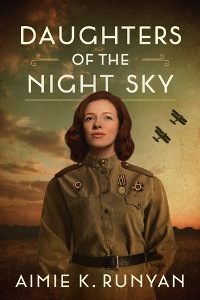 A superb portrait of wartime valor, Daughters of the Night Sky spotlights the accomplishments of the Russian military aviators known as the “Night Witches.” These all-female Red Army regiments flew harassment bombing missions against the Nazis under cover of darkness, in hand-me-down planes and without radios, to diminish the enemy’s strength and disrupt their sleep. It worked.
A superb portrait of wartime valor, Daughters of the Night Sky spotlights the accomplishments of the Russian military aviators known as the “Night Witches.” These all-female Red Army regiments flew harassment bombing missions against the Nazis under cover of darkness, in hand-me-down planes and without radios, to diminish the enemy’s strength and disrupt their sleep. It worked. We see the action from the viewpoint of Ekaterina (Katya) Ivanova, who has dreamed of flying since childhood. With her widowed mother’s support, she enrolls in a military academy for aviators. The story follows her training, her excitement at acceptance into a volunteer regiment led by a renowned female major, and the daring sorties she flies as her best friend’s navigator – and through significant moments of exhilaration, cameraderie, and sorrow. There’s a subtle romantic subplot, and Katya draws sustenance from her beloved’s letters, but it doesn’t overwhelm her dedication.
There are numerous hardships for Katya and her fellow aviators to overcome, from insufficient rations and icy temperatures to subtle resentment and outright sexual harassment. They enter into a man’s world quite literally, as exemplified by the male uniforms and undergarments distributed to them (complete with flap at the front, which they joke could be a place to hold their lipstick), but they modify them to almost fit. Tough and disciplined, they know they must surpass men’s expectations and accomplishments to be taken seriously. Soviet ideals stressed gender equality, and the novel acknowledges Comrade Stalin’s approval of these military women while providing examples of his totalitarianism.
In historical novels about multiple women, authors tend to slot them into compartments, creating characters representing different societal groups through their contrasting backgrounds: the snobby rich girl vs. the ambitious poor one, city-dwellers vs. naïve country folk, etc. Fortunately, as in her previous two books set in early Quebec, Runyan avoids this temptation. The aviators have unique characteristics and motivations, and despite their occasional disputes, she emphasizes how Katya and the others unite to perform their courageous mission. They form tight quartets – pilot, navigator, armorer, mechanic – whose lives are mutually dependent.
It’s a pleasure to see the author grow in strength as a novelist while adapting to a new historical setting. Her tension has grown sharper, her characterizations deeper, the emotional quality more penetrating. At one key moment, I worried she’d plotted herself into a corner, but this wasn’t the case; I found myself impressed by how this situation was resolved. With its absorbing blend of technical details and emotional resonance, Daughters of the Night Sky is a great way to wrap up your historical fiction reading year, or to start your new year of reading in 2018.
I received this copy for review via NetGalley. Daughters of the Night Sky, officially released by Lake Union in January, is the historical fiction pick for Amazon First Reads in December 2017. If you have a Kindle, I recommend selecting it as your choice!
Published on December 12, 2017 05:30
December 7, 2017
A gallery of fifteen historical fiction reads for Jewish Book Month
Jewish Book Month, an annual celebration of Jewish literature sponsored by the Jewish Book Council, has been in existence since 1943, though its history extends even further back. This year, it's being held between November 12 - December 12, 2017. The dates change each year, since it takes place just before Hanukkah.
As my way of participating in this event, here are 15 historical novels — family sagas, biographical novels, literary fiction, plus a couple of mysteries — featuring Jewish characters and/or focusing on aspects of Jewish history. Some of these are titles I've reviewed previously, and others are on my TBR. I've aimed to provide examples covering a range of geographic settings.
For additional examples, see the Jewish Book Council's historical fiction reading list. Please leave recommendations for other books in the comments!

The Galapagos Islands, WWII: Frances and Ainslie Conway, a married couple working for the Office of Naval Intelligence, embark on a clandestine mission on these distant islands but keep many secrets from each other. Based on historical characters. [see on Goodreads]
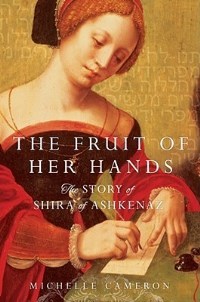
France and Germany, mid-13th century: the story of renowned German rabbi Meir ben Baruch of Rothenberg, the author’s ancestor, as seen from his wife’s viewpoint. [see my review] [see on Goodreads]
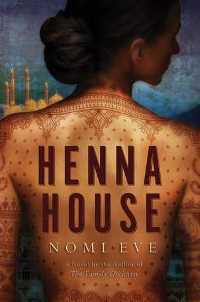
Yemen, 1920: in this intimate saga about Yemenite Jews, a young girl learns about her heritage through the artistry of henna tattoos. [see on Goodreads]
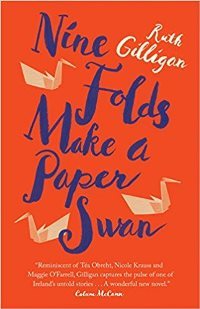
Ireland, 20th century and present-day: the story of the little-known Jewish community in Ireland unfolds through three distinct stories spanning over 100 years. [see on Goodreads]
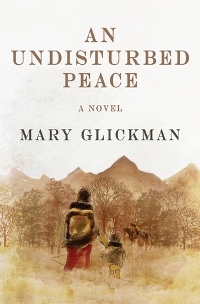
The US South, 1820s-30s: when a Jewish peddler falls in love with an independent Cherokee woman, he becomes personally entangled in a tragic tale set in motion twenty years earlier. [see my review] [see on Goodreads]
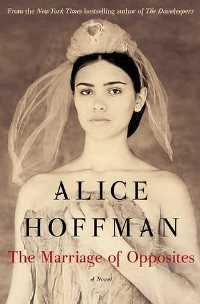
St. Thomas, early 19th century: a lyrical fictional biography of Rachel, a young woman from Paris who later became the mother of impressionist painter Camille Pissarro. [see on Goodreads]
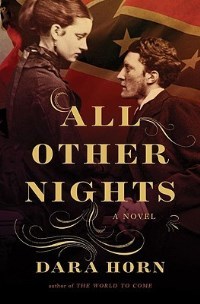
U.S. Civil War: a young Jewish man runs into trouble when he’s asked to infiltrate a group of suspected Confederate spies. [see my review] [see on Goodreads]
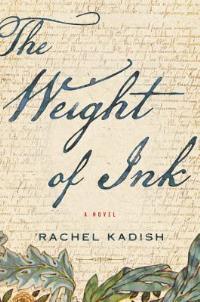
London, 1660s and today: in this dual-period literary novel, a modern historian seeks to uncover the identity of a scribe from centuries earlier. [see on Goodreads]
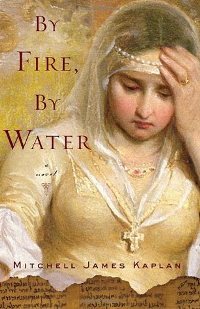
Spain, late 15th century: as the Inquisition solidifies its power across Spain, King Ferdinand's chancellor Luis de Santangel, who comes from a converso family, begins to examine his faith and cultural identity. [see on Goodreads]

Chicago, 1872: after an Orthodox rabbi is murdered, his daughter, Rivka, teams up with an Irish detective to find the perpetrator. [see on Goodreads]
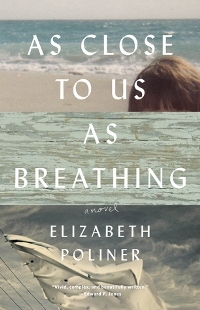
Connecticut, 1948: after what should be a relaxing summer at "Bagel Beach" along the shoreline turns unexpectedly tragic, the sisters in a close-knit Jewish family must deal with the lengthy fallout. [see on Goodreads]
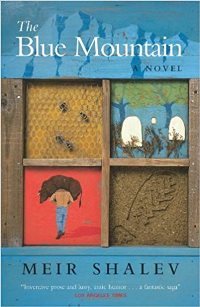
Palestine, early 20th century: in this work of magical realism (the author's first novel), several Ukrainian families move from Europe to settle in a rural village in Ottoman Palestine. [see on Goodreads]
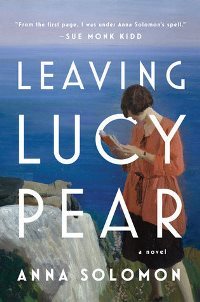
Cape Ann, 1927: a girl’s secret birth mother and her adoptive mother, one from a prominent Jewish family and the other the matriarch of a large Irish clan, find their lives intertwining again. [see my review] [see on Goodreads]
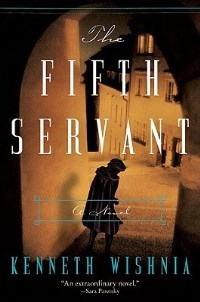
Prague, 1592: a Talmudic scholar investigates the murder of a young Christian girl, hoping to exonerate one of his fellow Jews. [see my review] [see on Goodreads]
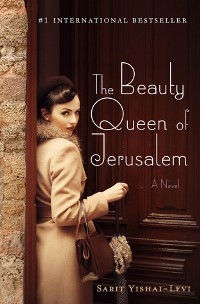
1920s-1970s Israel, as seen through the experiences of several women over four generations in a Sephardic Jewish family. [see my review] [see on Goodreads]
As my way of participating in this event, here are 15 historical novels — family sagas, biographical novels, literary fiction, plus a couple of mysteries — featuring Jewish characters and/or focusing on aspects of Jewish history. Some of these are titles I've reviewed previously, and others are on my TBR. I've aimed to provide examples covering a range of geographic settings.
For additional examples, see the Jewish Book Council's historical fiction reading list. Please leave recommendations for other books in the comments!

The Galapagos Islands, WWII: Frances and Ainslie Conway, a married couple working for the Office of Naval Intelligence, embark on a clandestine mission on these distant islands but keep many secrets from each other. Based on historical characters. [see on Goodreads]

France and Germany, mid-13th century: the story of renowned German rabbi Meir ben Baruch of Rothenberg, the author’s ancestor, as seen from his wife’s viewpoint. [see my review] [see on Goodreads]

Yemen, 1920: in this intimate saga about Yemenite Jews, a young girl learns about her heritage through the artistry of henna tattoos. [see on Goodreads]

Ireland, 20th century and present-day: the story of the little-known Jewish community in Ireland unfolds through three distinct stories spanning over 100 years. [see on Goodreads]

The US South, 1820s-30s: when a Jewish peddler falls in love with an independent Cherokee woman, he becomes personally entangled in a tragic tale set in motion twenty years earlier. [see my review] [see on Goodreads]

St. Thomas, early 19th century: a lyrical fictional biography of Rachel, a young woman from Paris who later became the mother of impressionist painter Camille Pissarro. [see on Goodreads]

U.S. Civil War: a young Jewish man runs into trouble when he’s asked to infiltrate a group of suspected Confederate spies. [see my review] [see on Goodreads]

London, 1660s and today: in this dual-period literary novel, a modern historian seeks to uncover the identity of a scribe from centuries earlier. [see on Goodreads]

Spain, late 15th century: as the Inquisition solidifies its power across Spain, King Ferdinand's chancellor Luis de Santangel, who comes from a converso family, begins to examine his faith and cultural identity. [see on Goodreads]

Chicago, 1872: after an Orthodox rabbi is murdered, his daughter, Rivka, teams up with an Irish detective to find the perpetrator. [see on Goodreads]

Connecticut, 1948: after what should be a relaxing summer at "Bagel Beach" along the shoreline turns unexpectedly tragic, the sisters in a close-knit Jewish family must deal with the lengthy fallout. [see on Goodreads]

Palestine, early 20th century: in this work of magical realism (the author's first novel), several Ukrainian families move from Europe to settle in a rural village in Ottoman Palestine. [see on Goodreads]

Cape Ann, 1927: a girl’s secret birth mother and her adoptive mother, one from a prominent Jewish family and the other the matriarch of a large Irish clan, find their lives intertwining again. [see my review] [see on Goodreads]

Prague, 1592: a Talmudic scholar investigates the murder of a young Christian girl, hoping to exonerate one of his fellow Jews. [see my review] [see on Goodreads]

1920s-1970s Israel, as seen through the experiences of several women over four generations in a Sephardic Jewish family. [see my review] [see on Goodreads]
Published on December 07, 2017 03:00
December 4, 2017
Mountains and memory: Return to Your Skin by Luz Gabás, a time-slip novel set in the Spanish Pyrenees
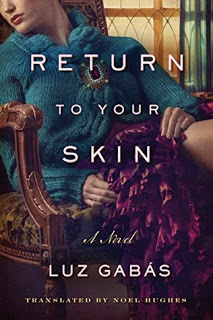 Most time-slip novels in the traditional mold are set in countries with a lengthy and well-documented history. Think Anya Seton’s Green Darkness, Barbara Erskine’s Lady of Hay, and, more recently, Nicola Cornick’s House of Shadows, all with British settings.
Most time-slip novels in the traditional mold are set in countries with a lengthy and well-documented history. Think Anya Seton’s Green Darkness, Barbara Erskine’s Lady of Hay, and, more recently, Nicola Cornick’s House of Shadows, all with British settings.Thanks to AmazonCrossing and the fluid translation of Noel Hughes, English-speaking readers have the opportunity to read one set in the less-common location of Spain: Return to Your Skin by Luz Gabás, which—as one can guess from the title—involves a reincarnation theme.
The modern story follows Brianda, an engineer in her late thirties, who leaves Madrid to stay with relatives in the remote mountain village of Tiles after suffering unexplained anxiety and a dream involving a dark-haired woman, a rain-soaked night, and an encounter with a mysterious man along a treacherously narrow aqueduct. Brianda has always had a great relationship with her live-in boyfriend, Esteban, but when her visions start invading their sex life, as shown in a disturbingly effective scene, she withdraws from him emotionally.
In Tiles, her aunt Isolina welcomes her warmly to Anels House, although her uncle Colau is as gruff as she remembers and seems consumed by a mysterious anger. Enigmatic Colau, whose family is rumored to be cursed, seems destined to be a typical villain but turns out to have perhaps the most intriguing psychological profile among all the characters. Colau is also a longtime researcher of local history, but what Brianda turns up doesn’t please him. And then she meets an Italian man named Corso who’s restoring his family’s manor, Lubich, across the woods from Anels, and to whom she feels an uncanny attraction.
About a third of the way in, the viewpoint switches to the heroine’s earlier counterpart, Brianda of Lubich. The political situation in late 16th-century Aragon, which grows progressively more hostile, takes a while to untangle due to the many individuals and factions involved. It’s a complex portrait of a dark, painful epoch, particularly for women—and one aspect of the plot, as Gabás explains in an afterword, is drawn from actual history.
Classic time-slip elements are introduced one by one: a churchyard with secrets, revelatory documents and other artifacts, and a secret passion that’s hard to deny. When romantic lightning strikes, though, what happens to the couple’s existing partners: are these situations addressed head on, or are the problems brushed aside? The answer is “some of both,” and in one case, disappointingly, it isn’t handled at all. Also, oddly, the modern characters appear not to have surnames.
The novel, moving slowly at first, gains significant power in the last half as the stakes grow higher, and accusations of witchcraft begin to fly. Its strength lies in its portrait of an era and its tragic aftermath, and the pressure this bears on subsequent generations.
Thanks to the publisher for providing access via NetGalley.
Published on December 04, 2017 12:34
December 1, 2017
Enchantress of Numbers by Jennifer Chiaverini, a biographical novel of computing pioneer Ada Lovelace
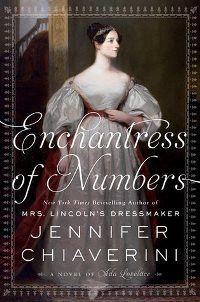 Known recently for her Civil War–era fiction, Chiaverini (Fates and Traitors, 2016) takes a transatlantic sojourn for this exquisite biographical novel. It’s a quintessential example of the form, covering nearly her subject’s entire life in an engaging, evenly paced style.
Known recently for her Civil War–era fiction, Chiaverini (Fates and Traitors, 2016) takes a transatlantic sojourn for this exquisite biographical novel. It’s a quintessential example of the form, covering nearly her subject’s entire life in an engaging, evenly paced style.Ada Byron King, Countess of Lovelace, was a nineteenth-century English mathematician who is considered an ancestress of the digital age for creating a computing algorithm. Her narration uses an inviting, slightly formal tone that evokes the era.
Much attention is given to Ada’s youth, describing how her overprotective mother, Annabella, seeks to suppress the “bad Byron blood” Ada inherited from her notorious poet father by upholding logic and discipline while discouraging imaginative thought. As Ada matures and finds mentors in inventor Charles Babbage and mathematician Mary Somerville, her relationship with Annabella (a wonderfully complex character) is shown with nuance.
In addition to the well-presented particularities of Ada’s life, including many scenes of society gatherings and technological demonstrations, the novel provokes reflection on interpersonal connections and how they shape one’s development. Wholeheartedly recommended for historical-fiction fans and STEM enthusiasts.
Enchantress of Numbers will be published on December 5 by Dutton. This review was written for Booklist's 10/15 issue.
Some other notes:
- As the daughter of math professors and as a one-time math major (and current math/computer science librarian) myself, I'd been planning to read this novel anyway so was pleased when it showed up in the mail as a Booklist assignment. This is my first experience reading one of Chiaverini's novels. Not long ago, I was asked for recommendations of historical novels that provide a comprehensive portrait of a character by following them through their entire life, or close – and this one fits.
- The portrait on the cover is actually one of Ada (something you don't see much of any more in historical fiction). It was painted in 1836 by British artist Margaret Sarah Carpenter, a scene which is dramatized in the novel.
- Chiaverini has also written the 20-book Elm Creek Quilts series, and some of those books are historical as well.
- Looking for other novels about women in STEM? See my earlier list, Women in Science and Mathematics: a gallery of historical novels (and read the comments, too).
Published on December 01, 2017 04:00
November 28, 2017
Unbound by John Shors, a novel of freedom, love, and the Great Wall of China
Meng was just a lone woman. She had been born with a voice but told by society not to use it, born with eyes but told not to see. Yet her feet and resolve were unbound. And she would travel onward, coming to better know the world that she was a part of, the steps she needed to take to consider herself free.
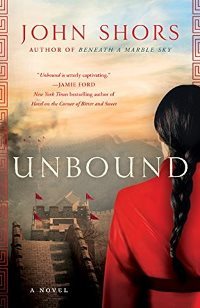 Seventh of John Shors’ Asian-set novels, Unbound reimagines a legend well-known in China but perhaps less familiar to Western audiences: that of a young wife determined to reunite with her beloved husband, who was pressed into service constructing the Great Wall.
Seventh of John Shors’ Asian-set novels, Unbound reimagines a legend well-known in China but perhaps less familiar to Western audiences: that of a young wife determined to reunite with her beloved husband, who was pressed into service constructing the Great Wall.
This version of the tale unfolds during the Ming Dynasty, in the mid-16th century. A year after her husband Fan’s departure, his wife Meng, missing him desperately and concerned about his well-being during the harsh winter atop the wall, crafts a warm coat and sets out on foot from Beijing, in male disguise, to bring it to him. Meanwhile, Fan, a talented craftsman responsible for maintaining the Great Wall’s structural integrity over the six miles between Jinshanling and Simatai, struggles to do his task amid increasingly poor health, regular Mongol attacks, and his cruel commander’s jealous rages and threats.
Meng and Fan’s love never wavers throughout the course of this clearly and straightforwardly written novel. Other subplots soon take prominence, though, such as Meng’s friendship with a man she meets en route (their teasing banter is lively and fun) and Fan’s protectiveness toward Bataar, a twelve-year-old enslaved Mongol boy. The question also arises about whether Bataar’s father will find and rescue him. There are no givens about how any of these situations will play out.
Descriptions abound of the Great Wall’s impressive architecture, with its many crenellations and watchtowers spanning the rugged terrain (“like a dragon sprawled across the mountains”) as well as the strategy behind its design. At times the educational purpose slows down the plot—considerable time is spent explaining how the Wall is built, and the information on how a sedan chair operates feels overlong—but anyone interested in Chinese history should find the material fascinating.
 The Great Wall of China at Jinshanling
The Great Wall of China at Jinshanling
Severin.stalder [CC BY-SA 3.0], via Wikimedia Commons
Although the lovers are Chinese, this isn’t a one-sided presentation. The Mongols are fierce fighters, proud of their culture and bounteous grasslands, who want to trade with their resistant southern neighbor. In contrast, the Chinese emperor (who is never seen, only talked about) comes off as rigid and xenophobic. The novel examines the various power differentials of the day: between men and women, the Chinese and Mongols, and the different classes in Chinese society. On her journey, Meng observes how regulations on dress and other customs are selectively relaxed the further one gets from Beijing: a nice touch.
A more thorough copy edit would have caught the occasional typos and misspellings. But for anyone curious about the Great Wall or the lives of average people during part of its construction, Unbound is definitely recommended.
Unbound was published in August in trade pb and ebook. Thanks to the author for providing me with a review copy.
 Seventh of John Shors’ Asian-set novels, Unbound reimagines a legend well-known in China but perhaps less familiar to Western audiences: that of a young wife determined to reunite with her beloved husband, who was pressed into service constructing the Great Wall.
Seventh of John Shors’ Asian-set novels, Unbound reimagines a legend well-known in China but perhaps less familiar to Western audiences: that of a young wife determined to reunite with her beloved husband, who was pressed into service constructing the Great Wall. This version of the tale unfolds during the Ming Dynasty, in the mid-16th century. A year after her husband Fan’s departure, his wife Meng, missing him desperately and concerned about his well-being during the harsh winter atop the wall, crafts a warm coat and sets out on foot from Beijing, in male disguise, to bring it to him. Meanwhile, Fan, a talented craftsman responsible for maintaining the Great Wall’s structural integrity over the six miles between Jinshanling and Simatai, struggles to do his task amid increasingly poor health, regular Mongol attacks, and his cruel commander’s jealous rages and threats.
Meng and Fan’s love never wavers throughout the course of this clearly and straightforwardly written novel. Other subplots soon take prominence, though, such as Meng’s friendship with a man she meets en route (their teasing banter is lively and fun) and Fan’s protectiveness toward Bataar, a twelve-year-old enslaved Mongol boy. The question also arises about whether Bataar’s father will find and rescue him. There are no givens about how any of these situations will play out.
Descriptions abound of the Great Wall’s impressive architecture, with its many crenellations and watchtowers spanning the rugged terrain (“like a dragon sprawled across the mountains”) as well as the strategy behind its design. At times the educational purpose slows down the plot—considerable time is spent explaining how the Wall is built, and the information on how a sedan chair operates feels overlong—but anyone interested in Chinese history should find the material fascinating.
 The Great Wall of China at Jinshanling
The Great Wall of China at JinshanlingSeverin.stalder [CC BY-SA 3.0], via Wikimedia Commons
Although the lovers are Chinese, this isn’t a one-sided presentation. The Mongols are fierce fighters, proud of their culture and bounteous grasslands, who want to trade with their resistant southern neighbor. In contrast, the Chinese emperor (who is never seen, only talked about) comes off as rigid and xenophobic. The novel examines the various power differentials of the day: between men and women, the Chinese and Mongols, and the different classes in Chinese society. On her journey, Meng observes how regulations on dress and other customs are selectively relaxed the further one gets from Beijing: a nice touch.
A more thorough copy edit would have caught the occasional typos and misspellings. But for anyone curious about the Great Wall or the lives of average people during part of its construction, Unbound is definitely recommended.
Unbound was published in August in trade pb and ebook. Thanks to the author for providing me with a review copy.
Published on November 28, 2017 05:00
November 24, 2017
A Christmas Return by Anne Perry, a holiday mystery novella set in Victorian times
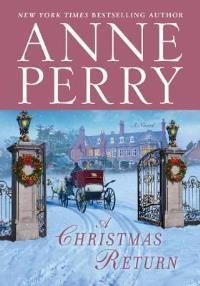 This compact little gem, Perry’s fifteenth Christmas novella, demonstrates her proficiency in writing Victorian-set mysteries. The protagonist is Mariah Ellison, grandmother of Charlotte Pitt from another of Perry’s series.
This compact little gem, Perry’s fifteenth Christmas novella, demonstrates her proficiency in writing Victorian-set mysteries. The protagonist is Mariah Ellison, grandmother of Charlotte Pitt from another of Perry’s series.One day in mid-December, Mariah receives an unusually heavy Christmas pudding at her London residence. Cutting into it, she discovers an ornamental cannonball—a gift that signals events from her past. The sender is Peter Wesley, grandson of her estranged friend Rowena, and he desperately needs Mariah’s help.
Twenty years earlier, in the village of Haslemere in Surrey, Rowena’s lawyer husband, Cullen, had suddenly refused to continue defending his client. Dr. Owen Durward had been accused of raping and murdering a teenage girl, and nobody knew the reasons behind Cullen’s change of heart. Then that same night, Cullen himself was killed, and Durward was subsequently acquitted.
Now Durward has returned to Haslemere again, wanting to dispel any lingering sentiments about his guilt. This dredges up immense pain for the Wesleys, since he’s spreading rumors that Rowena was the cause of his past troubles. Rowena isn’t the fighting sort, so Mariah and Peter decide to take action.
A plain woman in her eighties, Mariah has a reputation of being sharp-tongued and tetchy. In one of many skillful unveilings of human nature’s many facets, the story delves into the origins of her bitterness—and the courage she must exhibit to overcome it.
The atmosphere of close-knit village life in the 1890s feels pitch-perfect, from the homeliness of residents’ holiday decor to the gossip that spreads like a dreadful stain. The characterization is superb, and the work’s short length is perfect for the material. The spirit of the Christmas season is cleverly evoked through the underlying theme that it’s never too late for reconciliations and second chances.
Anne Perry's A Christmas Return was published by Ballantine this month (hardcover, 177pp). In the UK, the publisher is Headline. I reviewed it for November's Historical Novels Review. This is my second experience with one of her Christmas novellas, the first being A Christmas Escape from 2015. You don't have to have read the Thomas & Charlotte Pitt novels to enjoy this one.
Want to win a copy for yourself? I have an extra, which I'll be giving away to an interested blog reader. Just enter your info in the form below by Friday, December 1st, and I'll draw a random entry after that. This giveaway is open internationally. One entry per household, please; void where prohibited. Good luck!
Loading...
Published on November 24, 2017 05:00
November 21, 2017
Women of World War II: a gallery of historical novels, new and old
Over the last few days, my husband and I have been getting into the historical crime drama series The Bletchley Circle on DVD, since we'd missed seeing it when it aired on PBS. Set in 1952, the show focuses on a quartet of women formerly part of the code-breaking team at Bletchley Park during wartime, and how they reunite to trap a serial killer. We've only seen the first season so far, and I can highly recommend it for its insights into the postwar era and women's lives and hidden talents. Plus, there are scenes of almost unbearable suspense; you may not want to watch too late at night!
Along these lines, and per a reader's request, here are 10 historical novels evoking women's wartime efforts. This gallery mixes current reads, forthcoming titles, and some older novels which appeared before the period became trendy, and which are deserving of a second look.
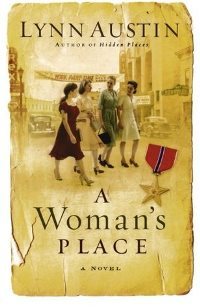 In this inspirational novel, four women of different ages and economic backgrounds become friends during their work at a small-town Michigan factory contracted to build ships for the US war effort. Bethany House, 2006. [see on Goodreads]
In this inspirational novel, four women of different ages and economic backgrounds become friends during their work at a small-town Michigan factory contracted to build ships for the US war effort. Bethany House, 2006. [see on Goodreads]
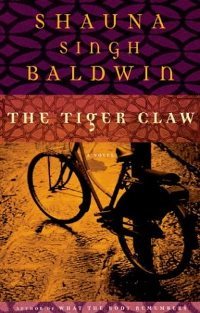
Baldwin's literary novel is based on the real life of Noor Inayat Khan, an Indo-American woman who became an undercover wireless operator for the British government in occupied France. Knopf Canada, 2004. [see on Goodreads]

Beard's debut dramatizes the story of ordinary women who traveled to Oak Ridge, Tennessee, in the 1940s to work on a clandestine mission whose true purpose was kept from them. William Morrow, February 2018. [see on Goodreads]
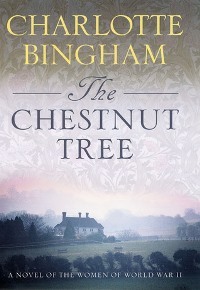
First in a trilogy, The Chestnut Tree takes place in a small Sussex fishing village and follows the lives of a group of women determined to help with the war effort, and who participate in different ways. Thomas Dunne, 2003. [see on Goodreads]
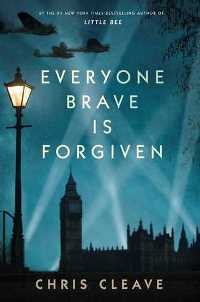
Basing his novel on the wartime lives of his two grandmothers, Cleave depicts a young aristocratic Londoner who forges an inner strength through her traumatic experiences, and two men who love her. Simon & Schuster, 2016. [see on Goodreads]
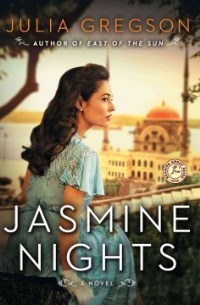
An adventurous young Welsh singer travels the world during wartime, entertaining the troops, and is asked to assist the British Secret Service, a job she keeps secret from the man she loves. Touchstone, 2012. [see on Goodreads]

The immense courage and heroism of military nurses during WWII are depicted via the author's depiction of two friends half a world apart, one stationed in France, the other in the South Pacific. William Morrow, 2017 (this is the paperback cover). [see on Goodreads]
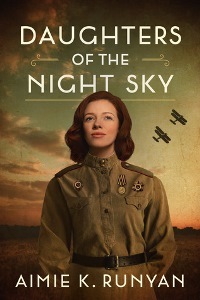
Called the "Night Witches" by the Germans, this all-female squadron of Russian military aviators was known for courage, daring, and precision. Runyan's third novel (after two historicals about the early settlement of Quebec) follows a young pilot who takes to the skies for her country. Lake Union, January 2018. [see on Goodreads]
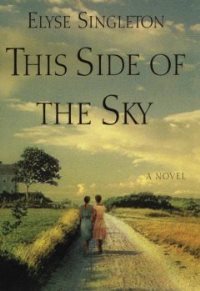
From the 1930s through the postwar years, two young African-American women from Mississippi, lifelong friends, find that their destinies lead them across America and Europe; their story involves their wartime service. BlueHen, 2002. [see on Goodreads]
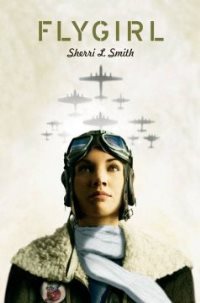
In this novel about determination and identity, Ida Mae Jones, a light-skinned black woman from Louisiana, decides to pass for white to join the WASPs (Women's Airforce Service Pilots) when the United States enters the war. The heroine is eighteen, and although this book is classified as YA, it should interest adult readers as well. Putnam, 2009. [see on Goodreads]
Looking for yet more on this topic? See Part 1 and Part 2 of my "women at war" lists, which I'd posted back in 2011.
Along these lines, and per a reader's request, here are 10 historical novels evoking women's wartime efforts. This gallery mixes current reads, forthcoming titles, and some older novels which appeared before the period became trendy, and which are deserving of a second look.
 In this inspirational novel, four women of different ages and economic backgrounds become friends during their work at a small-town Michigan factory contracted to build ships for the US war effort. Bethany House, 2006. [see on Goodreads]
In this inspirational novel, four women of different ages and economic backgrounds become friends during their work at a small-town Michigan factory contracted to build ships for the US war effort. Bethany House, 2006. [see on Goodreads]
Baldwin's literary novel is based on the real life of Noor Inayat Khan, an Indo-American woman who became an undercover wireless operator for the British government in occupied France. Knopf Canada, 2004. [see on Goodreads]

Beard's debut dramatizes the story of ordinary women who traveled to Oak Ridge, Tennessee, in the 1940s to work on a clandestine mission whose true purpose was kept from them. William Morrow, February 2018. [see on Goodreads]

First in a trilogy, The Chestnut Tree takes place in a small Sussex fishing village and follows the lives of a group of women determined to help with the war effort, and who participate in different ways. Thomas Dunne, 2003. [see on Goodreads]

Basing his novel on the wartime lives of his two grandmothers, Cleave depicts a young aristocratic Londoner who forges an inner strength through her traumatic experiences, and two men who love her. Simon & Schuster, 2016. [see on Goodreads]

An adventurous young Welsh singer travels the world during wartime, entertaining the troops, and is asked to assist the British Secret Service, a job she keeps secret from the man she loves. Touchstone, 2012. [see on Goodreads]

The immense courage and heroism of military nurses during WWII are depicted via the author's depiction of two friends half a world apart, one stationed in France, the other in the South Pacific. William Morrow, 2017 (this is the paperback cover). [see on Goodreads]

Called the "Night Witches" by the Germans, this all-female squadron of Russian military aviators was known for courage, daring, and precision. Runyan's third novel (after two historicals about the early settlement of Quebec) follows a young pilot who takes to the skies for her country. Lake Union, January 2018. [see on Goodreads]

From the 1930s through the postwar years, two young African-American women from Mississippi, lifelong friends, find that their destinies lead them across America and Europe; their story involves their wartime service. BlueHen, 2002. [see on Goodreads]

In this novel about determination and identity, Ida Mae Jones, a light-skinned black woman from Louisiana, decides to pass for white to join the WASPs (Women's Airforce Service Pilots) when the United States enters the war. The heroine is eighteen, and although this book is classified as YA, it should interest adult readers as well. Putnam, 2009. [see on Goodreads]
Looking for yet more on this topic? See Part 1 and Part 2 of my "women at war" lists, which I'd posted back in 2011.
Published on November 21, 2017 06:00



